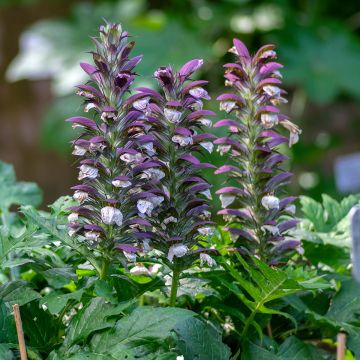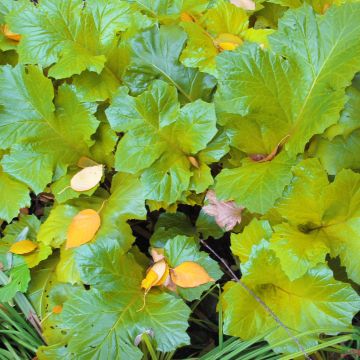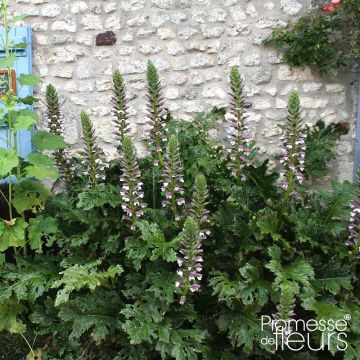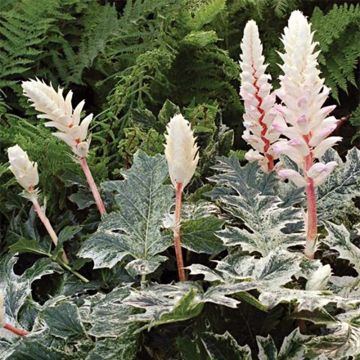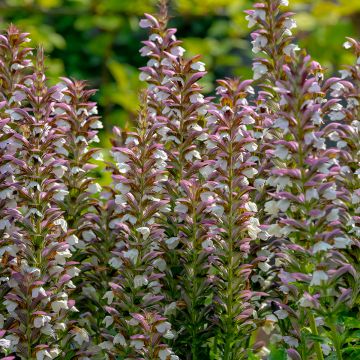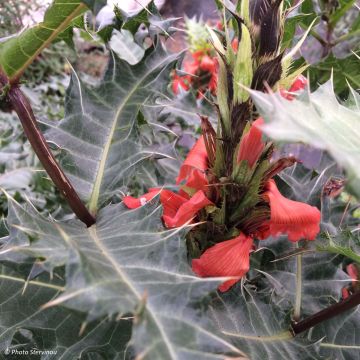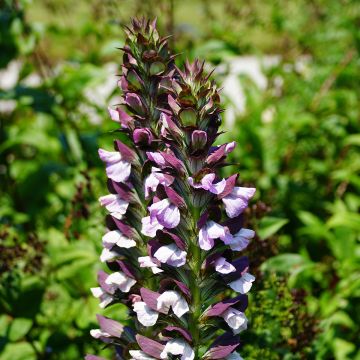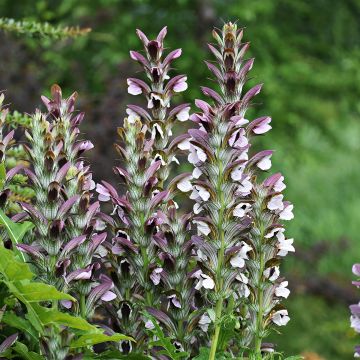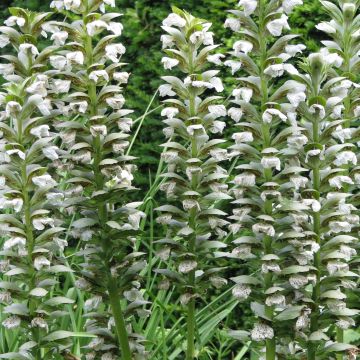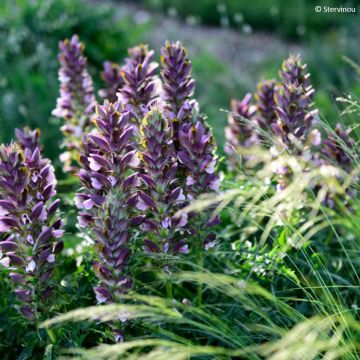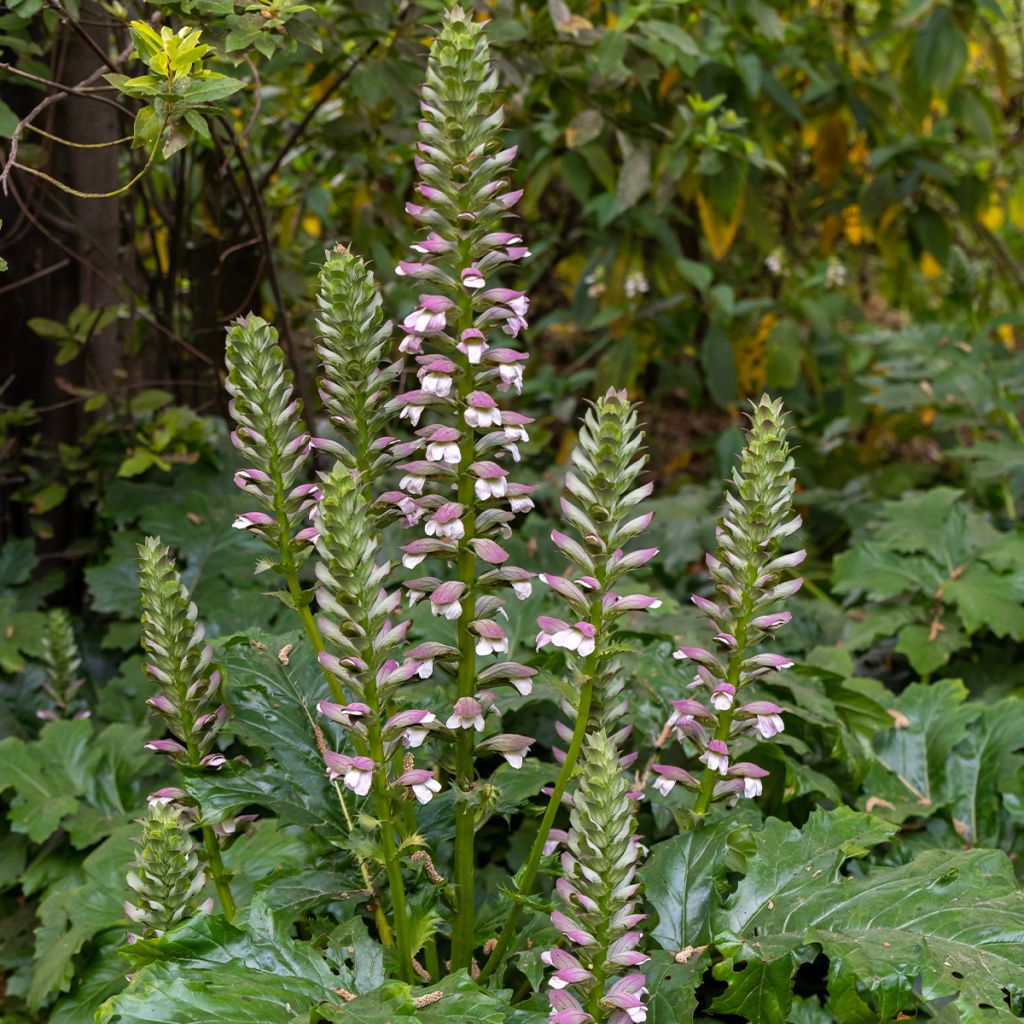

Acanthus mollis (seeds)
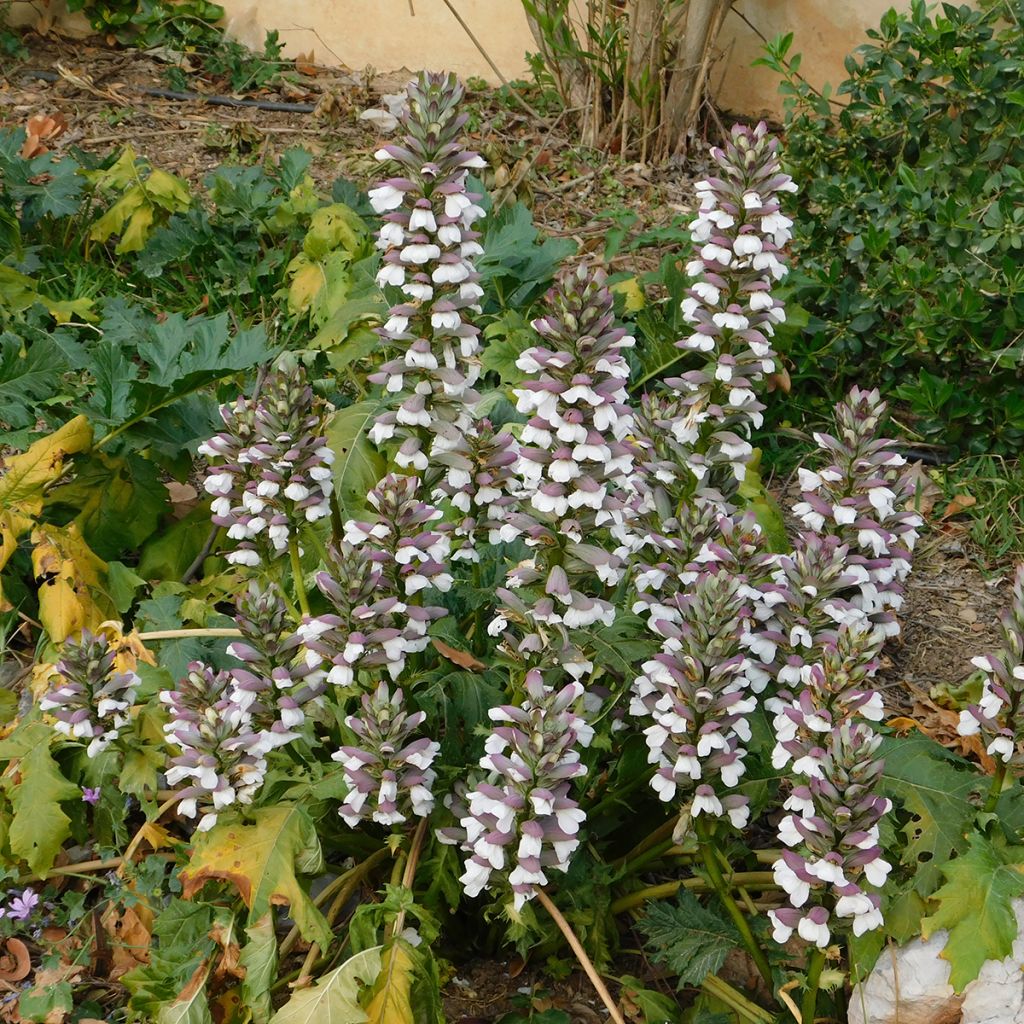

Acanthus mollis (seeds)
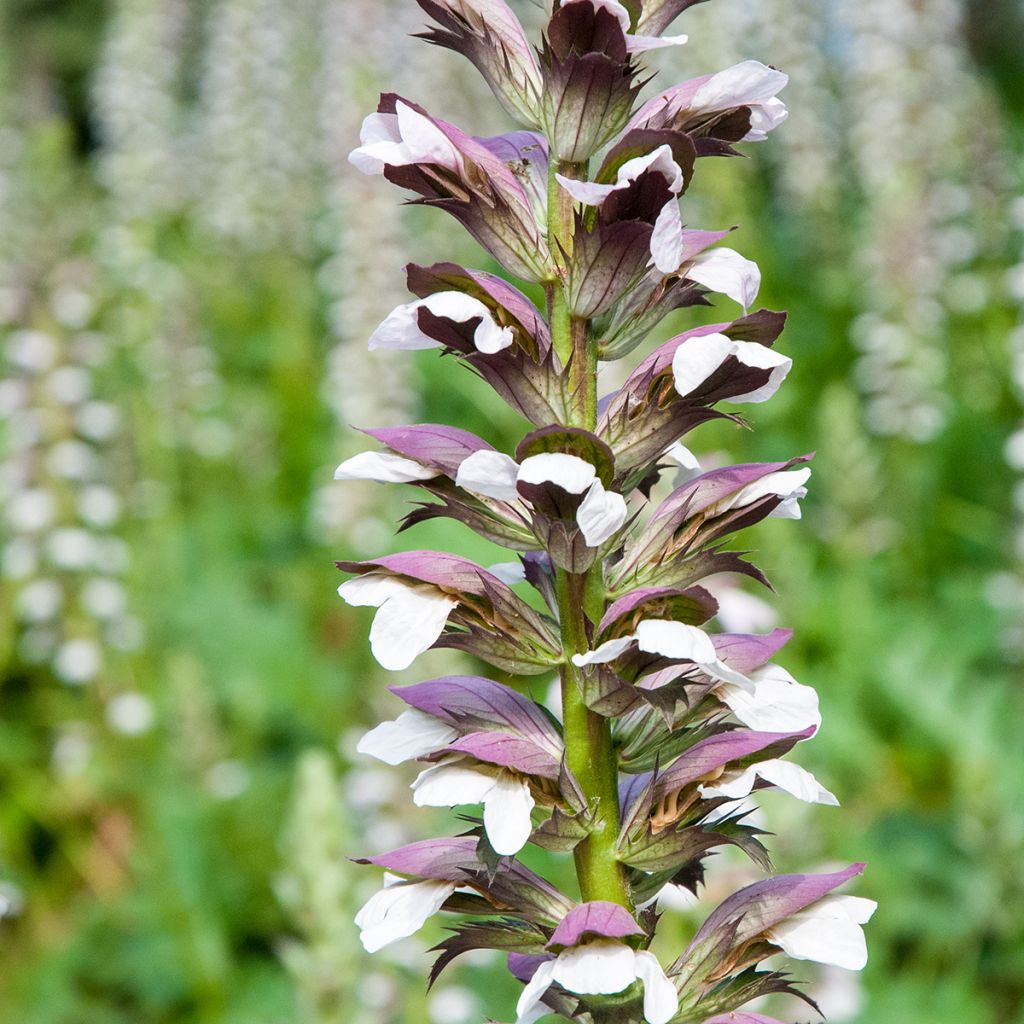

Acanthus mollis (seeds)
Acanthus mollis (seeds)
Acanthus mollis
Bear's Breeches
This item cannot be shipped to the selected country
Dispatch by letter from €3.90
More information
Schedule delivery date,
and select date in basket
This plant carries a 6 months recovery warranty
More information
We guarantee the quality of our plants for a full growing cycle, and will replace at our expense any plant that fails to recover under normal climatic and planting conditions.
Seed-only orders are dispatched by sealed envelope. The delivery charge for seed-only orders is €3.90.
Does this plant fit my garden?
Set up your Plantfit profile →
Description
The soft-leaved acanthus, in Latin Acanthus mollis, is a robust perennial of Mediterranean undergrowth appreciated for its architectural vegetation. Its large dark leaves with beautifully cut foliage adorn Corinthian capitals, while its floral spikes, laden with long white-pink and purple flowers with spiny bracts, have inspired the Empire style. The acanthus is relatively cold-resistant in the garden and adapts its vegetative cycle according to the climate. It is a plant with a rare elegance, which brings volume, texture, and luxuriance to any setting. However, its spread should be controlled, as where it thrives, for example, in old gardens in the South of France, it self-seeds abundantly—the seeds flower after three years.
The Acanthus mollis belongs to the Acanthaceae family. It is native to northern Greece, Albania, and Croatia. It is a perennial herbaceous plant whose stump spreads through large, fleshy roots. These roots also serve as storage organs, allowing it to survive the summer drought, resting underground. The acanthus is tolerant of soil conditions; it likes rocks and tolerates limestone very well, but in northern regions, it does not appreciate very clayey and wet soils in winter. However, its well-established stump can withstand brief frosts of around -12 to -15°C in well-drained soil.
At maturity, the Soft-leaved Acanthus will form a beautifully spreading clump reaching approximately 70 cm in height and 80 cm in width. In hot climates, it blooms in late spring, avoids drought underground in summer, and its vegetation restarts in autumn, remaining throughout winter if temperatures do not drop below -8°C. In cooler climates, its foliage emerges in spring, blooms in the heart of summer and goes dormant underground in autumn to escape the cold. The foliage, dark green and glossy, is composed of leaves that can reach 1 metre long, deeply lobed.
The flowering is spectacular, from June to August, depending on the region: tall floral stems emerge from the ground, reaching up to 1.25 m or 1.50 m. Very rigid, they do not require staking. Each spike carries many elongated flowers, 5 cm long, tightly packed together and almost horizontally oriented. Each white flower is partially enveloped in purple sepals and equipped with formidable spiny bracts. This flowering attracts pollinating insects such as large black bees (carpenter bees or xylocopes). The flowers are followed by large brown seeds embedded in the spiny bracts, which are impossible to harvest without wearing gloves!
The Great-leaved Acanthus finds its place in undergrowth, in perennial borders, or even along pathways. It can also be planted as a standalone specimen, providing volume and verticality to a somewhat austere ensemble, for example, against a dark background of hedges or conifers. The acanthus flowers, as well as its leaves, enhance large fresh or dried bouquets. The plant pairs well with wildflowers or plants with flexible foliage like grasses, creating a beautiful contrast. As it tolerates root competition very well, it can be planted under a pine or oak tree with periwinkles or variegated ivy 'Gloire de Marengo' used as ground cover.
Properties: Acanthus is still used today in traditional medicine to treat inflammations. It was formerly used to obtain a yellow pigment.
Report an error about the product description
Acanthus mollis (seeds) in pictures




Flowering
Foliage
Plant habit
Botanical data
Acanthus
mollis
Acanthaceae
Bear's Breeches
Mediterranean
Other Acanthus
Planting and care
Sowing advice:
Direct sowing in the field in autumn, with seeds harvested at maturity.
Sowing under cold frames in early spring. Soak the seeds in warm water for 12 hours.
Sowing in the field in May/June. Soak the seeds in warm water for 12 hours.
Sow the seeds at a depth of 2 cm in good, light, moist, and well-drained soil. Germination will take 7 to 21 days at temperatures between 18 and 20 °C.
Transplant the young plants when they are developed enough to be handled, usually six weeks after sowing. Transplanting should occur in spring in cooler climates or autumn in hotter areas, with a spacing of 70 cm between plants.
Cultivation advice:
Acanthus mollis should be planted in spring (in cool climates) or early autumn (in hot climates), depending on the region. It prefers partial shade but can tolerate full sun. It grows in hot temperatures in the shade of large trees, even in competition with their roots. Cultivate it in a sheltered location, in any soil, as long as it is rich, deep, and well-drained. Limestone is not a problem, nor are rocky soils. Very compact and clayey soils, waterlogged in winter, should be avoided in our regions where winters are cold. It tolerates coastal air. Space the acanthus plants 60-70 cm apart. Apply compost in autumn or spring. Keep the soil moist in summer in cooler climates and allow the acanthus to enter dormancy in hot areas. In cold regions, apply winter mulch for at least the first year after planting.
Cultivate acanthus in a mixture of garden soil and compost under bright, filtered light in a greenhouse. Water moderately during the growing season. It is a plant that does not like to be moved. After flowering, cut the flower spikes if you do not want it to self-seed. To prevent it from spreading, cut the flower spike before it produces seeds; be careful, as it can be prickly. In spring, slugs and snails can invade acanthus, especially on humid days. They are susceptible to powdery mildew in hot and humid conditions.
Sowing period
Intended location
This item has not been reviewed yet - be the first to leave a review about it.
Haven't found what you were looking for?
Hardiness is the lowest winter temperature a plant can endure without suffering serious damage or even dying. However, hardiness is affected by location (a sheltered area, such as a patio), protection (winter cover) and soil type (hardiness is improved by well-drained soil).

Photo Sharing Terms & Conditions
In order to encourage gardeners to interact and share their experiences, Promesse de fleurs offers various media enabling content to be uploaded onto its Site - in particular via the ‘Photo sharing’ module.
The User agrees to refrain from:
- Posting any content that is illegal, prejudicial, insulting, racist, inciteful to hatred, revisionist, contrary to public decency, that infringes on privacy or on the privacy rights of third parties, in particular the publicity rights of persons and goods, intellectual property rights, or the right to privacy.
- Submitting content on behalf of a third party;
- Impersonate the identity of a third party and/or publish any personal information about a third party;
In general, the User undertakes to refrain from any unethical behaviour.
All Content (in particular text, comments, files, images, photos, videos, creative works, etc.), which may be subject to property or intellectual property rights, image or other private rights, shall remain the property of the User, subject to the limited rights granted by the terms of the licence granted by Promesse de fleurs as stated below. Users are at liberty to publish or not to publish such Content on the Site, notably via the ‘Photo Sharing’ facility, and accept that this Content shall be made public and freely accessible, notably on the Internet.
Users further acknowledge, undertake to have ,and guarantee that they hold all necessary rights and permissions to publish such material on the Site, in particular with regard to the legislation in force pertaining to any privacy, property, intellectual property, image, or contractual rights, or rights of any other nature. By publishing such Content on the Site, Users acknowledge accepting full liability as publishers of the Content within the meaning of the law, and grant Promesse de fleurs, free of charge, an inclusive, worldwide licence for the said Content for the entire duration of its publication, including all reproduction, representation, up/downloading, displaying, performing, transmission, and storage rights.
Users also grant permission for their name to be linked to the Content and accept that this link may not always be made available.
By engaging in posting material, Users consent to their Content becoming automatically accessible on the Internet, in particular on other sites and/or blogs and/or web pages of the Promesse de fleurs site, including in particular social pages and the Promesse de fleurs catalogue.
Users may secure the removal of entrusted content free of charge by issuing a simple request via our contact form.
The flowering period indicated on our website applies to countries and regions located in USDA zone 8 (France, the United Kingdom, Ireland, the Netherlands, etc.)
It will vary according to where you live:
- In zones 9 to 10 (Italy, Spain, Greece, etc.), flowering will occur about 2 to 4 weeks earlier.
- In zones 6 to 7 (Germany, Poland, Slovenia, and lower mountainous regions), flowering will be delayed by 2 to 3 weeks.
- In zone 5 (Central Europe, Scandinavia), blooming will be delayed by 3 to 5 weeks.
In temperate climates, pruning of spring-flowering shrubs (forsythia, spireas, etc.) should be done just after flowering.
Pruning of summer-flowering shrubs (Indian Lilac, Perovskia, etc.) can be done in winter or spring.
In cold regions as well as with frost-sensitive plants, avoid pruning too early when severe frosts may still occur.
The planting period indicated on our website applies to countries and regions located in USDA zone 8 (France, United Kingdom, Ireland, Netherlands).
It will vary according to where you live:
- In Mediterranean zones (Marseille, Madrid, Milan, etc.), autumn and winter are the best planting periods.
- In continental zones (Strasbourg, Munich, Vienna, etc.), delay planting by 2 to 3 weeks in spring and bring it forward by 2 to 4 weeks in autumn.
- In mountainous regions (the Alps, Pyrenees, Carpathians, etc.), it is best to plant in late spring (May-June) or late summer (August-September).
The harvesting period indicated on our website applies to countries and regions in USDA zone 8 (France, England, Ireland, the Netherlands).
In colder areas (Scandinavia, Poland, Austria...) fruit and vegetable harvests are likely to be delayed by 3-4 weeks.
In warmer areas (Italy, Spain, Greece, etc.), harvesting will probably take place earlier, depending on weather conditions.
The sowing periods indicated on our website apply to countries and regions within USDA Zone 8 (France, UK, Ireland, Netherlands).
In colder areas (Scandinavia, Poland, Austria...), delay any outdoor sowing by 3-4 weeks, or sow under glass.
In warmer climes (Italy, Spain, Greece, etc.), bring outdoor sowing forward by a few weeks.

































